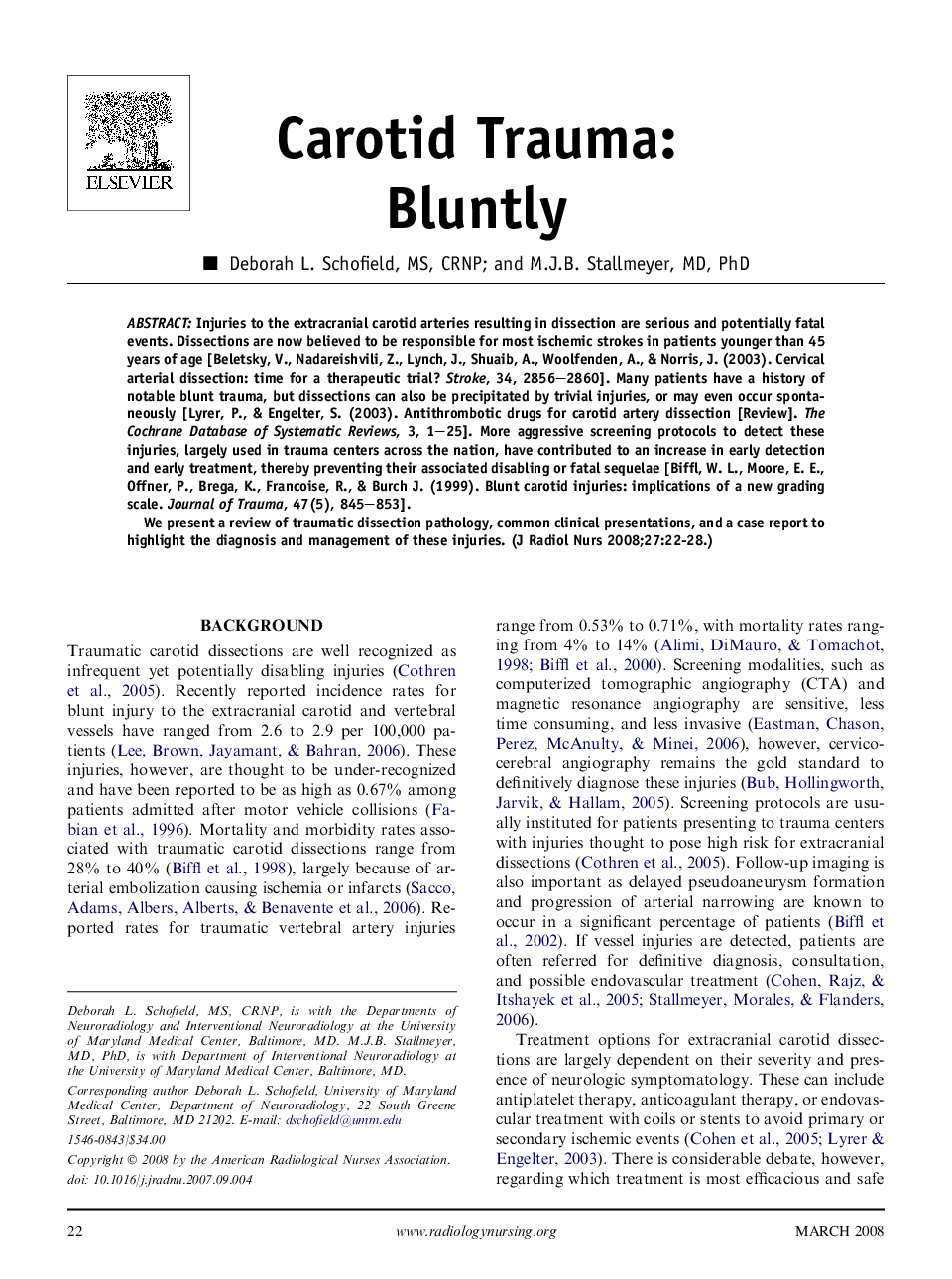| Article ID | Journal | Published Year | Pages | File Type |
|---|---|---|---|---|
| 2671170 | Journal of Radiology Nursing | 2008 | 7 Pages |
Injuries to the extracranial carotid arteries resulting in dissection are serious and potentially fatal events. Dissections are now believed to be responsible for most ischemic strokes in patients younger than 45 years of age [Beletsky, V., Nadareishvili, Z., Lynch, J., Shuaib, A., Woolfenden, A., & Norris, J. (2003). Cervical arterial dissection: time for a therapeutic trial? Stroke, 34, 2856–2860]. Many patients have a history of notable blunt trauma, but dissections can also be precipitated by trivial injuries, or may even occur spontaneously [Lyrer, P., & Engelter, S. (2003). Antithrombotic drugs for carotid artery dissection [Review]. The Cochrane Database of Systematic Reviews, 3, 1–25]. More aggressive screening protocols to detect these injuries, largely used in trauma centers across the nation, have contributed to an increase in early detection and early treatment, thereby preventing their associated disabling or fatal sequelae [Biffl, W. L., Moore, E. E., Offner, P., Brega, K., Francoise, R., & Burch J. (1999). Blunt carotid injuries: implications of a new grading scale. Journal of Trauma, 47(5), 845–853].We present a review of traumatic dissection pathology, common clinical presentations, and a case report to highlight the diagnosis and management of these injuries.
